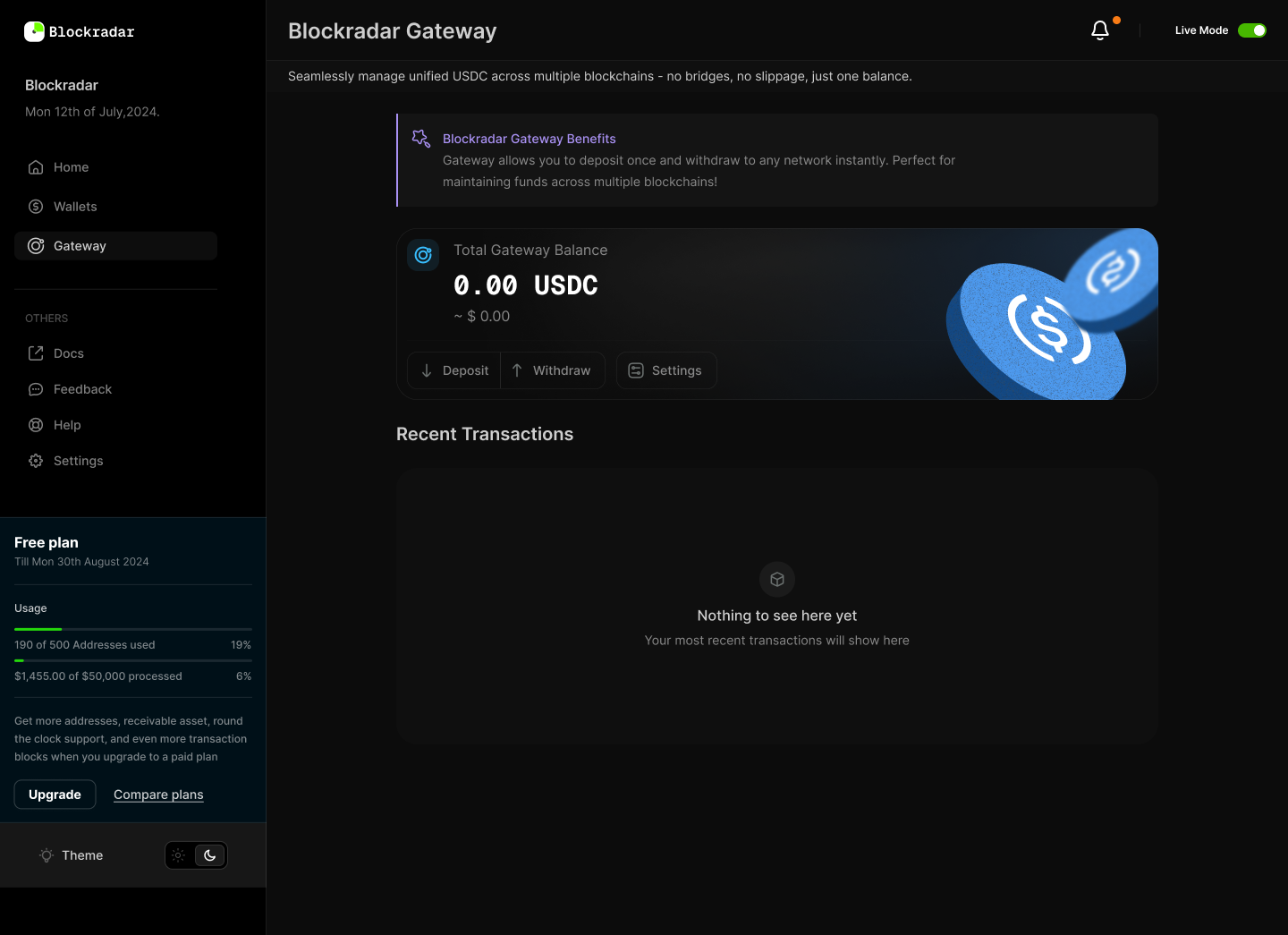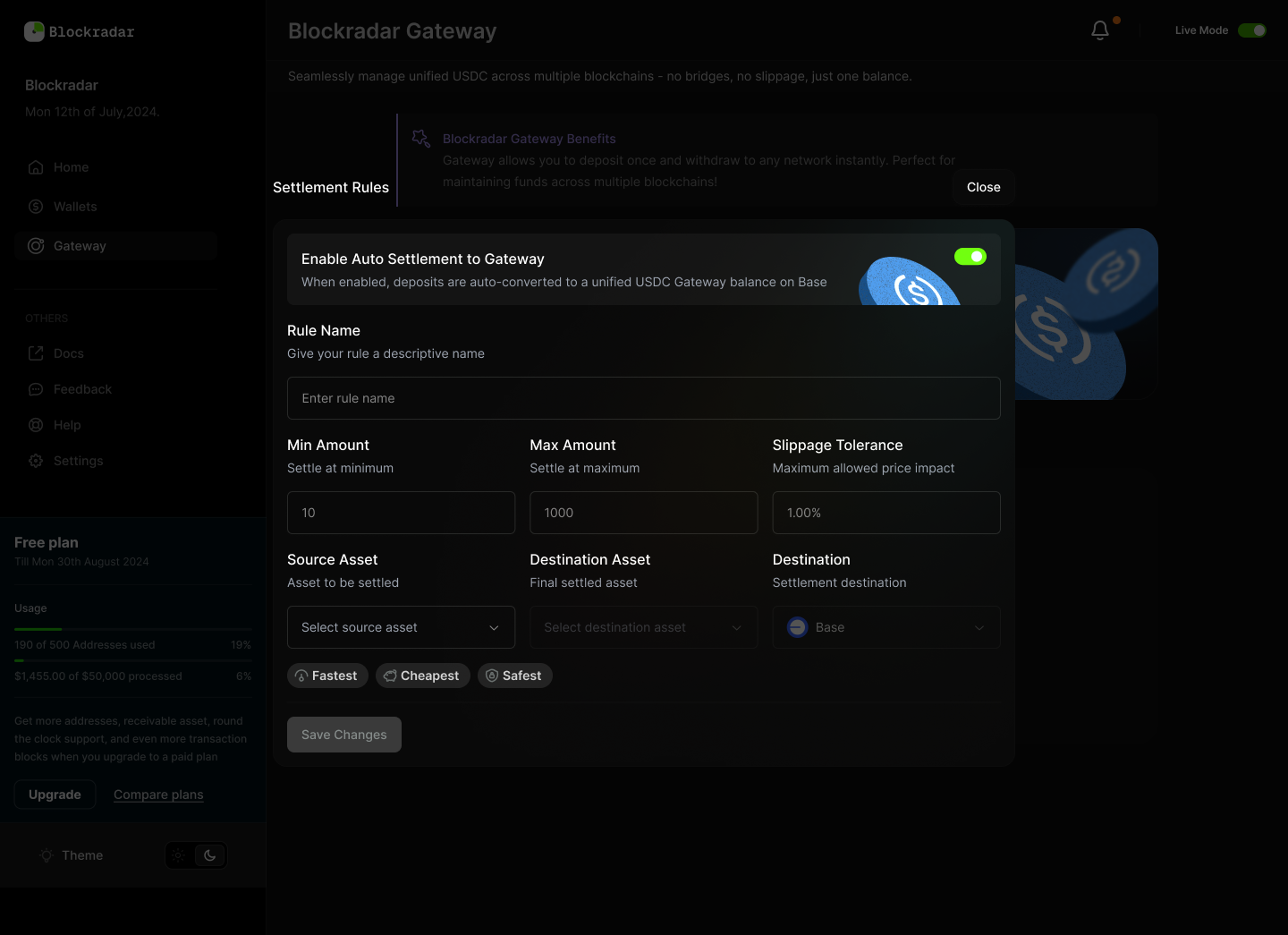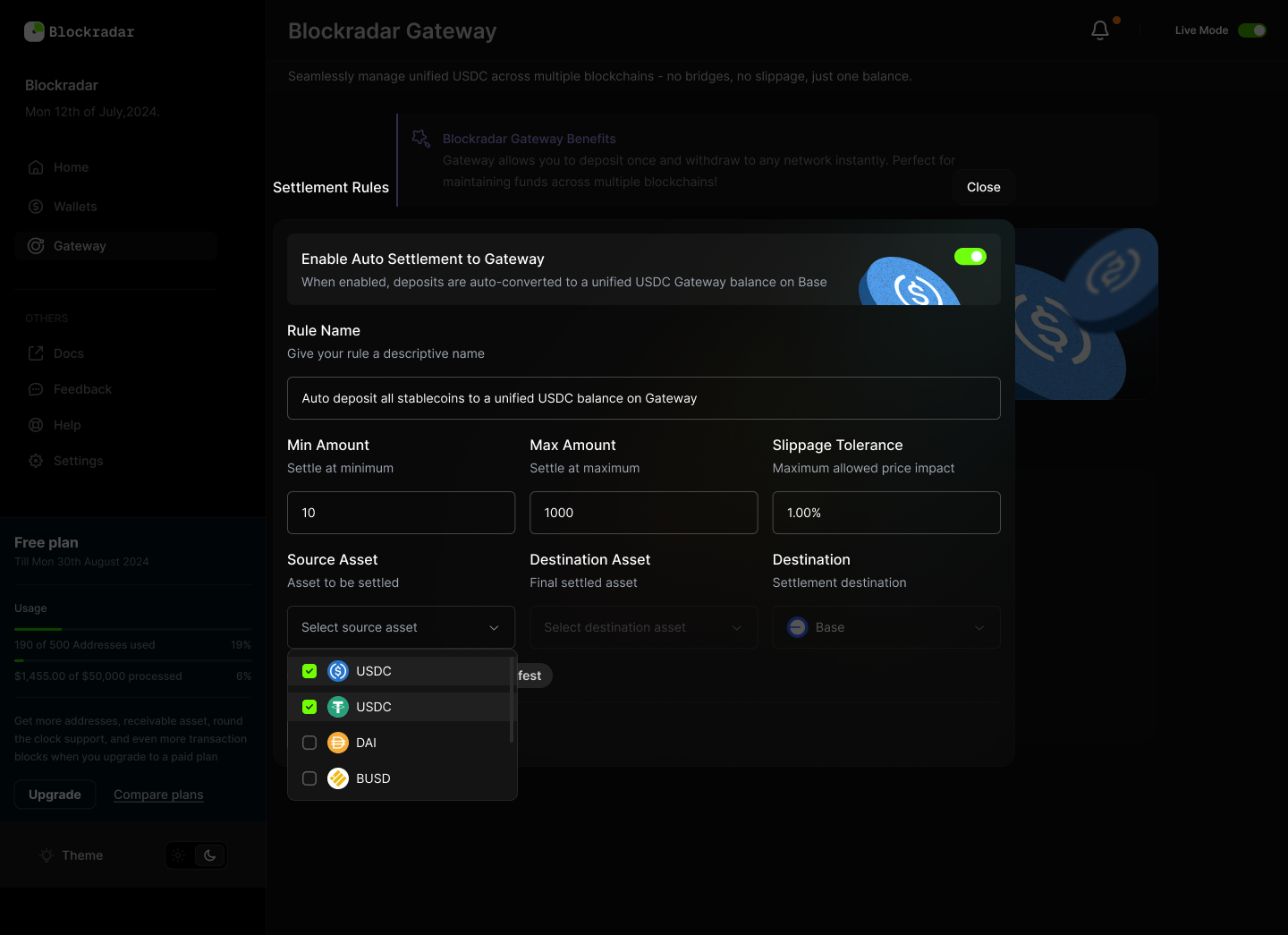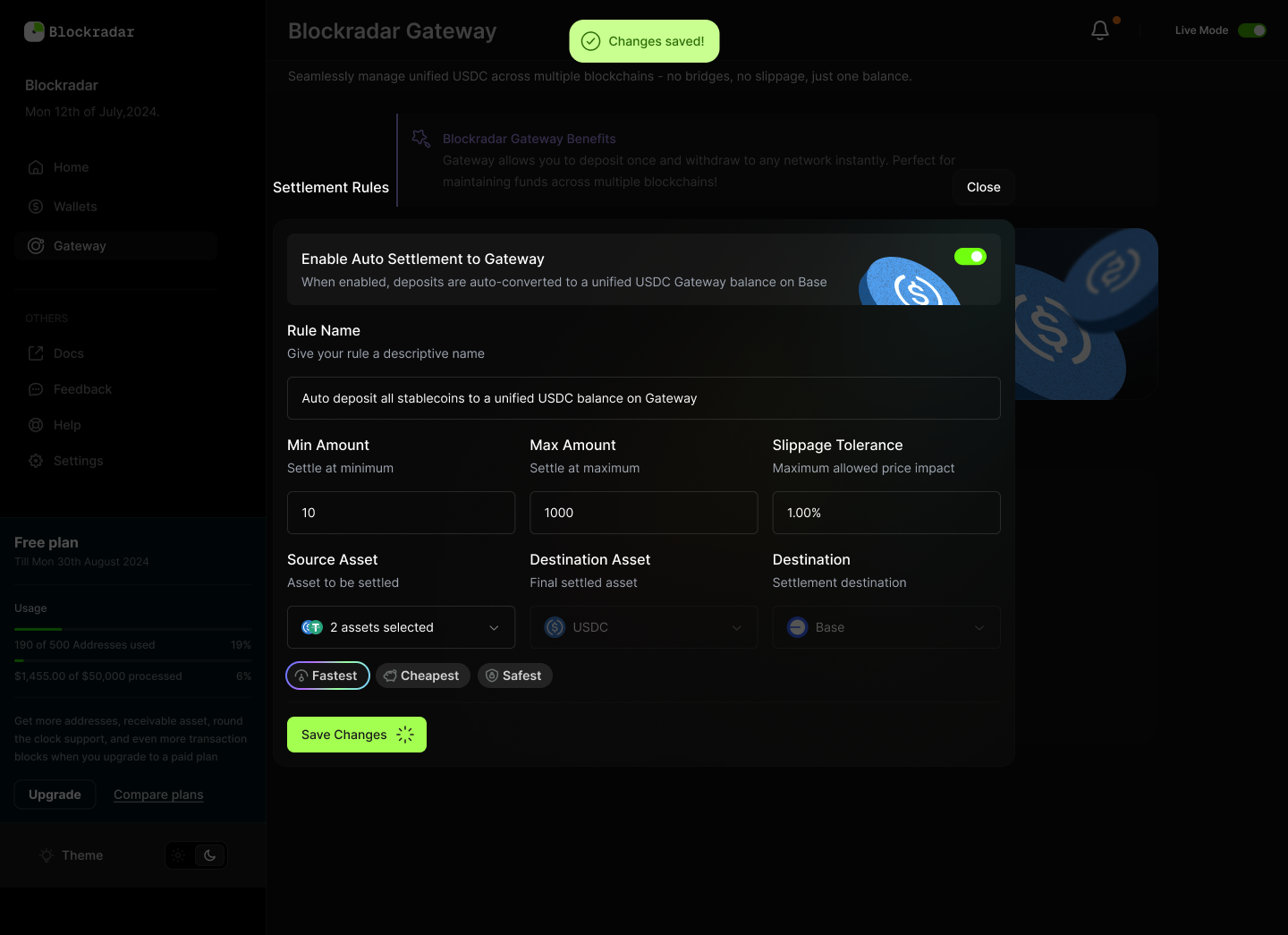In a nutshell
The Gateway feature enables unified USDC management across multiple blockchains—provide instant crosschain deposits and withdrawals to any supported network, all from a single, chain-abstracted balance.
The Gateway feature enables unified USDC management across multiple blockchains—provide instant crosschain deposits and withdrawals to any supported network, all from a single, chain-abstracted balance.
Introduction
Gateway lets you seamlessly manage USDC across all supported blockchains. It eliminates manual bridging, rebalancing, and liquidity fragmentation—letting you move, deposit, and withdraw USDC instantly, from any chain to any chain.Supported actions:
- Deposit USDC from any supported blockchain into your unified Gateway balance.
- Instantly withdraw (mint) USDC on any other supported blockchain.
- View wallets, transactions, and balances via API.
API Endpoints
Below are the core API endpoints for Gateway operations:- POST /gateway/deposit – Deposit USDC to Gateway balance
- POST /gateway/withdraw – Withdraw USDC from Gateway balance to any supported chain
- GET /gateway/wallets – List Gateway wallets
- GET /gateway/transactions – Review all Gateway-related transactions
- GET /gateway/balance – Query unified USDC balance
- POST /gateway/deposit-network-fee – Get deposit network fee estimate
- POST /gateway/withdraw-network-fee – Get withdrawal network fee estimate
Do NOT send USDC directly to Gateway Wallet contract using a standard token transfer—this
will result in permanent loss of funds. Only use the official API methods for deposits.
- Gateway displays network fees prior to deposit or withdrawal; fees are deducted from your master wallet balance.
Dashboard Overview
The Gateway dashboard provides an intuitive UI for managing your unified USDC balance. You can create rules, monitor balances, and configure settlement preferences without touching the API.
Key dashboard sections:
- Wallets – View all linked wallets and their unified balances
- Transactions – Track deposits, withdrawals, and settlement activity.
- Gateway Rules – Configure auto-settlement rules for incoming deposits.
Auto Settlement Configuration
Auto Settlement rules allow deposits to be automatically converted into a unified USDC balance on your chosen destination chain (e.g., Base). This removes the need to manually swap or bridge assets. autosettlement-gateway1.png
Why Auto Settlement Matters
- Reduces fragmentation – All incoming stablecoins are normalized into USDC.
- Saves time – No need to manually monitor or convert deposits.
- Risk management – Apply slippage tolerance and rules to protect against bad executions.
- Operational efficiency – Ensures your treasury always sits in a single, chain-abstracted balance.
Creating a Settlement Rule
Each rule lets you define how and when incoming deposits are settled:
- Rule Name – Give your settlement rule a descriptive name.
- Min/Max Amount – Control the size of deposits that trigger settlement.
- Slippage Tolerance – Protects against high volatility or poor execution.
- Source Asset – Choose which assets to auto-settle (e.g., USDT, DAI).
- Destination Asset – Typically USDC, unified in Gateway.
- Destination Chain – Select your target chain (e.g., Base).
- Settlement Preference – Optimize for Fastest, Cheapest, or Safest execution.

Deposit Finality
When depositing into Gateway, funds are credited to your unified balance only after the transaction reaches finality on the source chain.Finality depends on each chain’s consensus rules and required block confirmations.
Testnet
| Chain | Source | Destination |
|---|---|---|
| Avalanche Fuji | ✔ | ✔ |
| Base Sepolia | ✔ | ✔ |
| Ethereum Sepolia | ✔ | ✔ |
You can get test tokens on the test environments listed out
here
Mainnet
| Chain | Source | Destination |
|---|---|---|
| Arbitrum | ✔ | ✔ |
| Avalanche | ✔ | ✔ |
| Base | ✔ | ✔ |
| Ethereum | ✔ | ✔ |
| Optimism | ✔ | ✔ |
| Polygon | ✔ | ✔ |
Required Confirmations & Finality Times
| Chain | Confirmations | Approx. Time to Finality |
|---|---|---|
| Arbitrum | ~65 ETH blocks | ~13 to 19 minutes |
| Avalanche | 1 | ~8 seconds |
| Base | ~65 ETH blocks | ~13 to 19 minutes |
| Ethereum | ~65 | ~13–19 minutes |
| Optimism | ~65 ETH blocks | ~13 to 19 minutes |
| Polygon | ~2-3 | ~8 seconds |
Gateway only credits your balance after finality is reached. Make sure to
account for these confirmation times when designing user-facing flows,
especially if supporting both testnet and mainnet.
Happy hacking! ❤️

